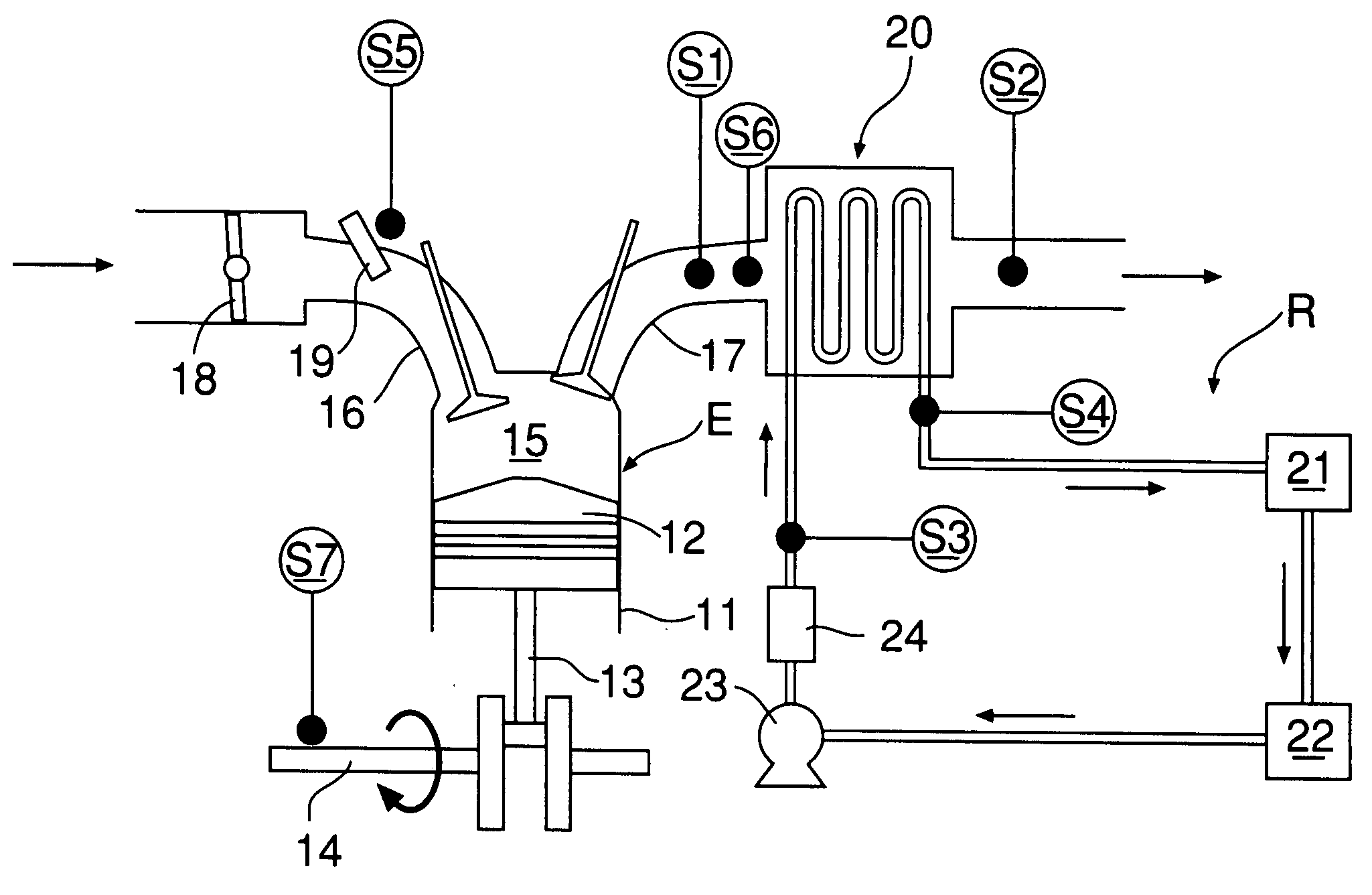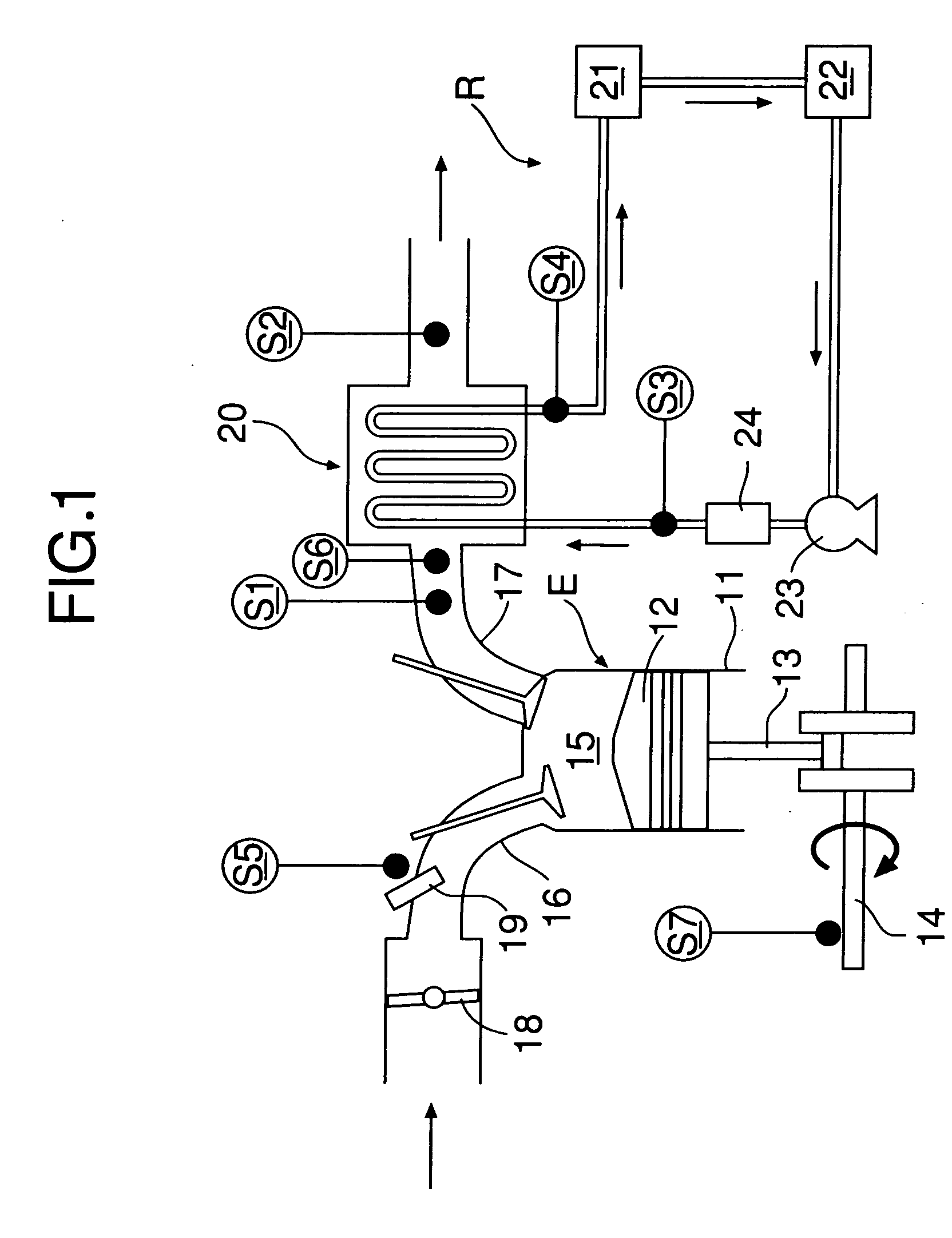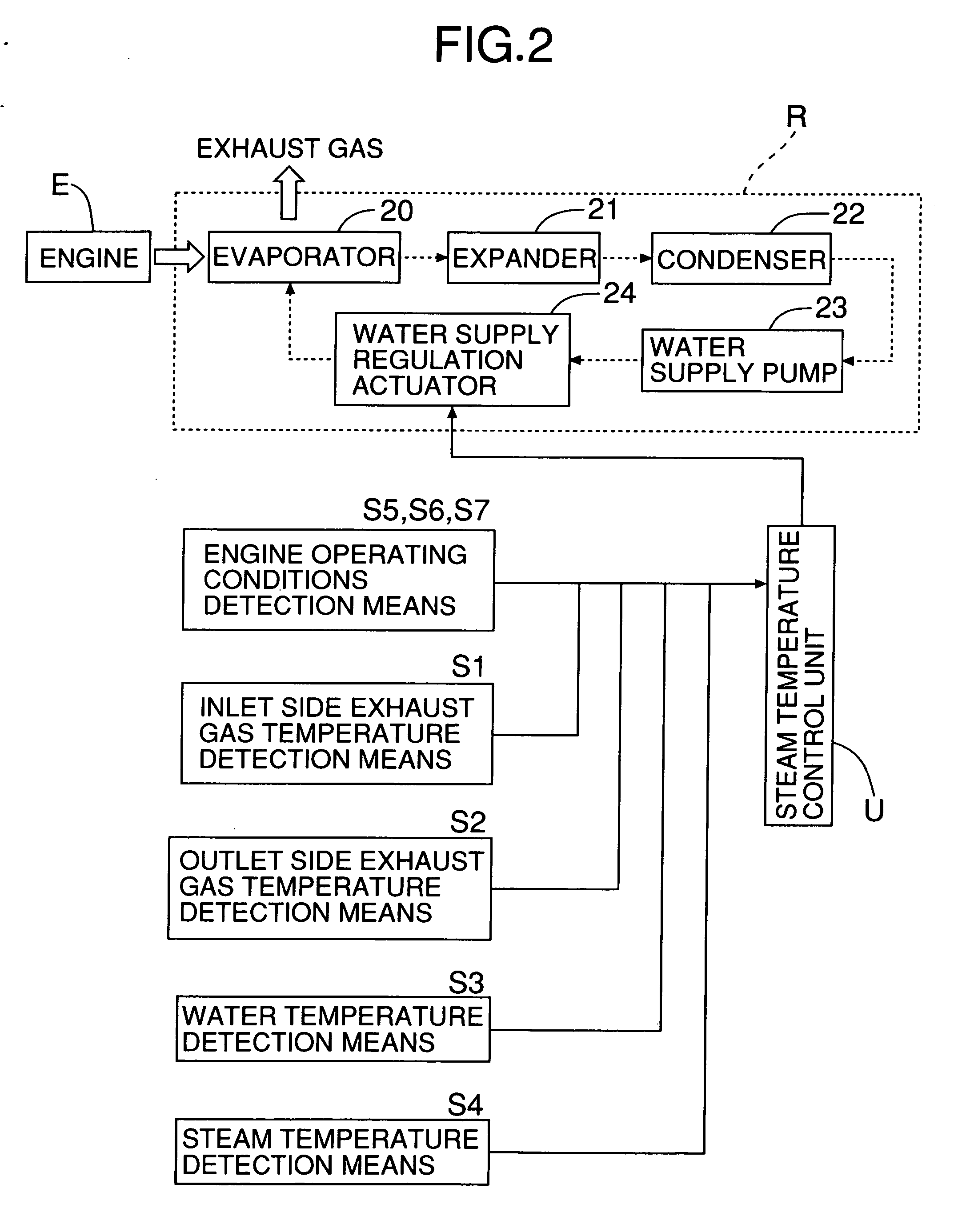Temperature control device of evaporator
- Summary
- Abstract
- Description
- Claims
- Application Information
AI Technical Summary
Benefits of technology
Problems solved by technology
Method used
Image
Examples
first embodiment
[0014] the present invention is explained below with reference to FIG. 1 to FIG. 6.
[0015] As shown in FIG. 1 and FIG. 2, a gasoline engine E includes a cylinder 11, a piston 12 that is slidably fitted in the cylinder 11, a connecting rod 13 having a little end connected to the piston 12, a crankshaft 14 connected to a big end of the connecting rod 13, a combustion chamber 15 defined between the cylinder 11 and the piston 12, an intake port 16 that communicates with the combustion chamber 15, an exhaust port 17 that communicates with the combustion chamber 15, a throttle valve 18 provided in the intake port 16, a fuel injection valve 19 provided in the intake port 16, and an evaporator 20 provided in the exhaust port 17.
[0016] A Rankine cycle system R for recovering pressure energy and thermal energy of exhaust gas of the engine E and converting them into mechanical energy includes the evaporator 20 for generating steam as a gas-phase working medium by heating water as a liquid-phas...
second embodiment
[0032] the present invention is now explained with reference to FIG. 7.
[0033] In the second embodiment, the method for determining the exhaust gas flow rate Gmix by calculation is different from that of the first embodiment, but the rest of the structure and the operation are the same as those of the first embodiment.
[0034] In the second embodiment, in order to determine an exhaust gas flow rate Gmix there are provided, as engine operating conditions detection means, fuel injection quantity detection means S5 for detecting the amount of fuel injected per unit time and intake air volume detection means S8 (air flow meter) for detecting the mass flow rate of the intake air. The exhaust gas flow rate Gmix is then calculated from
Exhaust gas flow rate Gmix=Quantity of fuel injected per unit time×Mass flow rate of intake air.
third embodiment
[0035] the present invention is now explained with reference to FIG. 8.
[0036] In the third embodiment, the method for determining the exhaust gas flow rate Gmix by calculation is different from that of the first embodiment, but the rest of the structure and the operation are the same as those of the first embodiment.
[0037] In the third embodiment, in order to determine an exhaust gas flow rate Gmix there are provided, as engine operating conditions detection means, air / fuel ratio detection means S6 for detecting an air / fuel ratio of an engine E, and intake air volume detection means S8 (air flow meter) for detecting the mass flow rate of the intake air. The exhaust gas flow rate Gmix is then calculated from
Exhaust gas flow rate Gmix=Mass flow rate of intake air×{1 / (Air / fuel ratio+1)}.
[0038] In accordance with these second and third embodiments, the same effects as those of the first embodiment can be achieved.
[0039] Although embodiments of the present invention are explained in ...
PUM
 Login to View More
Login to View More Abstract
Description
Claims
Application Information
 Login to View More
Login to View More - R&D
- Intellectual Property
- Life Sciences
- Materials
- Tech Scout
- Unparalleled Data Quality
- Higher Quality Content
- 60% Fewer Hallucinations
Browse by: Latest US Patents, China's latest patents, Technical Efficacy Thesaurus, Application Domain, Technology Topic, Popular Technical Reports.
© 2025 PatSnap. All rights reserved.Legal|Privacy policy|Modern Slavery Act Transparency Statement|Sitemap|About US| Contact US: help@patsnap.com



